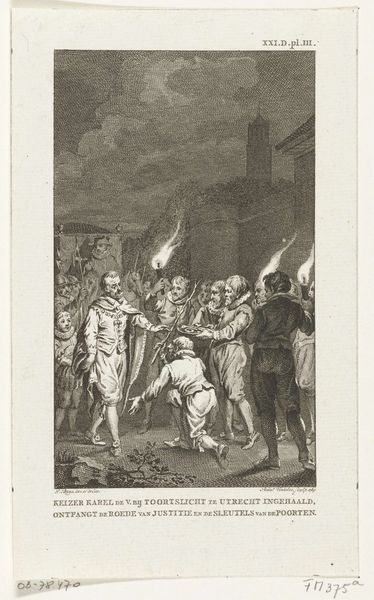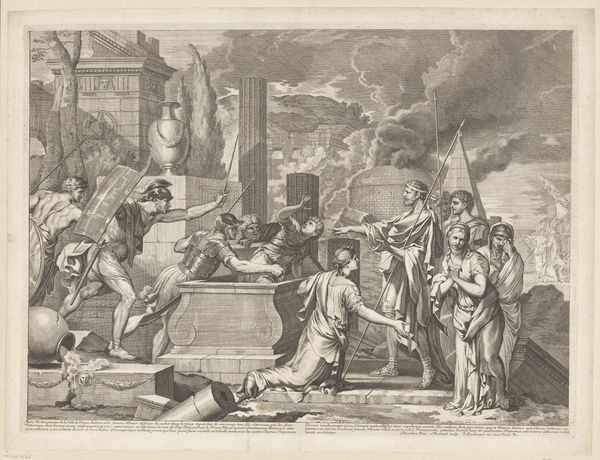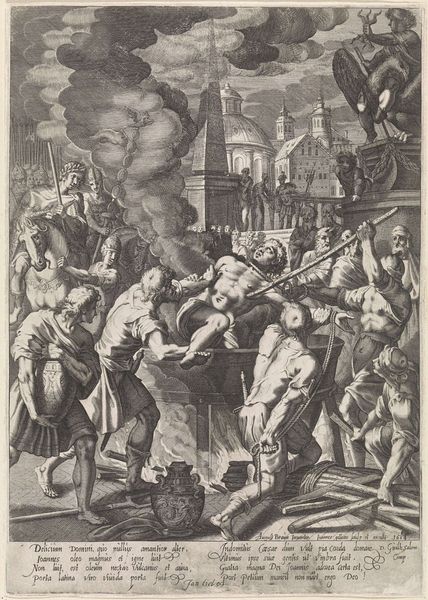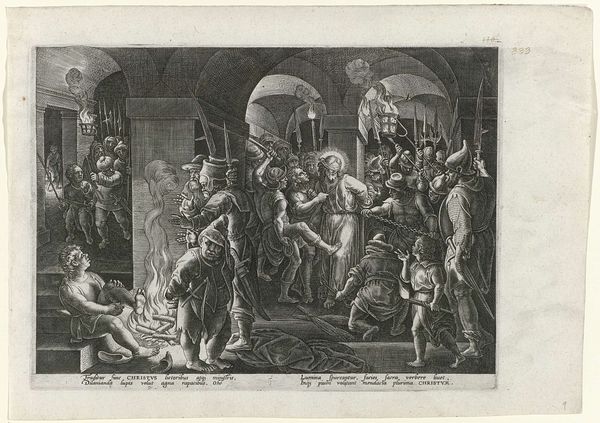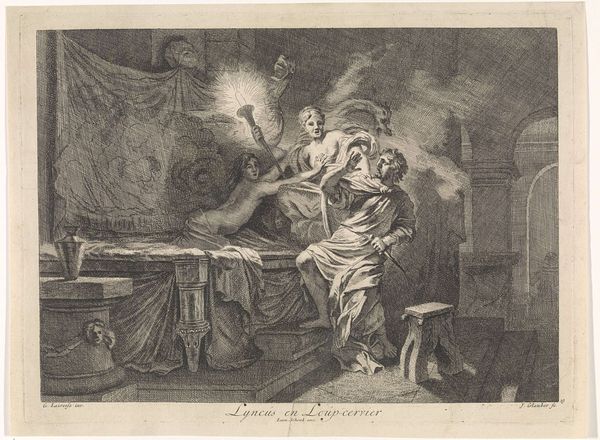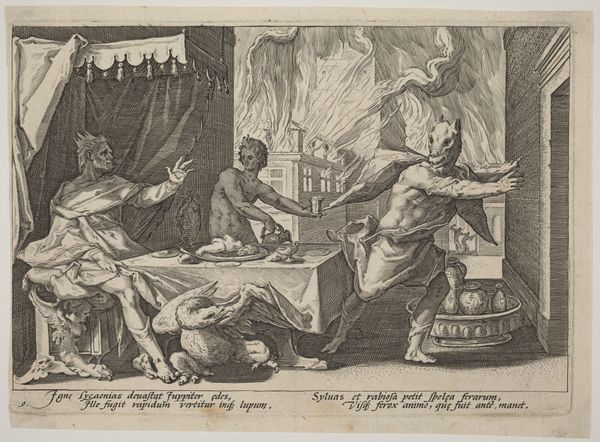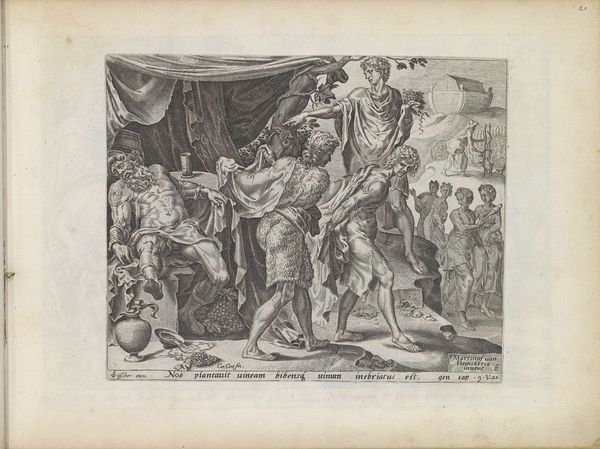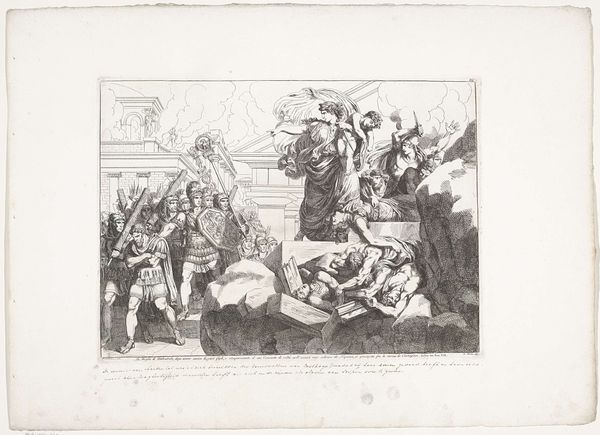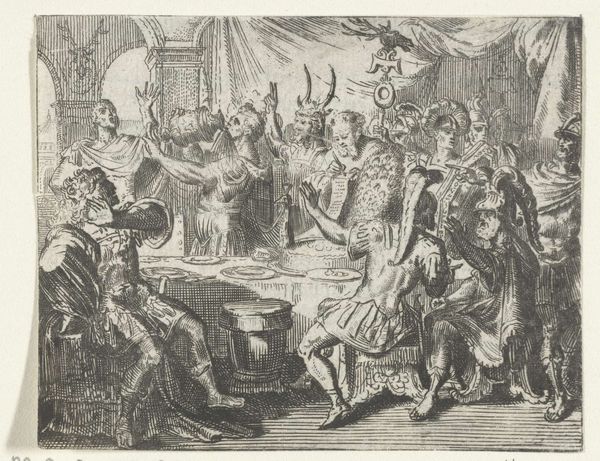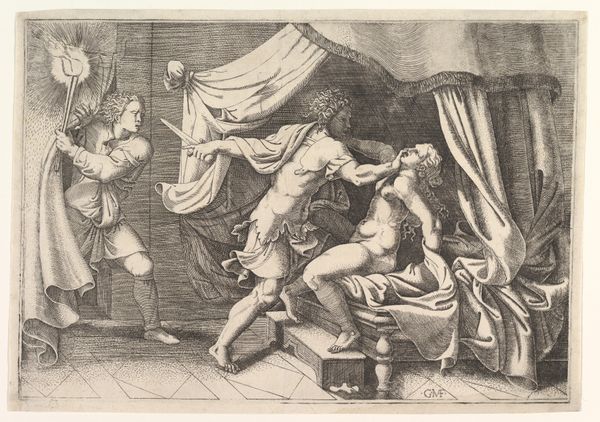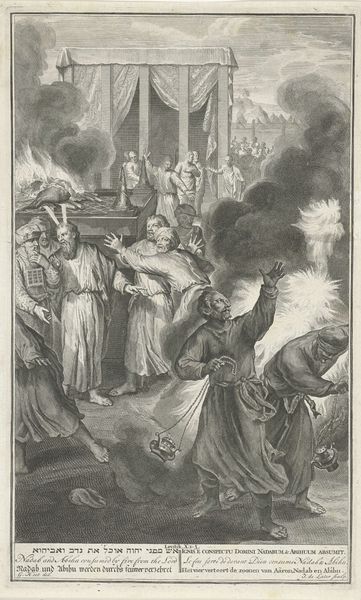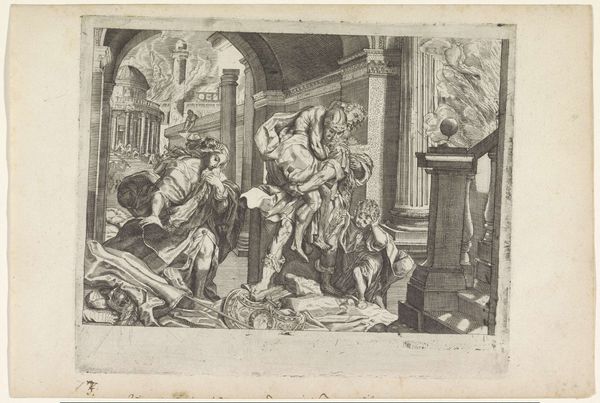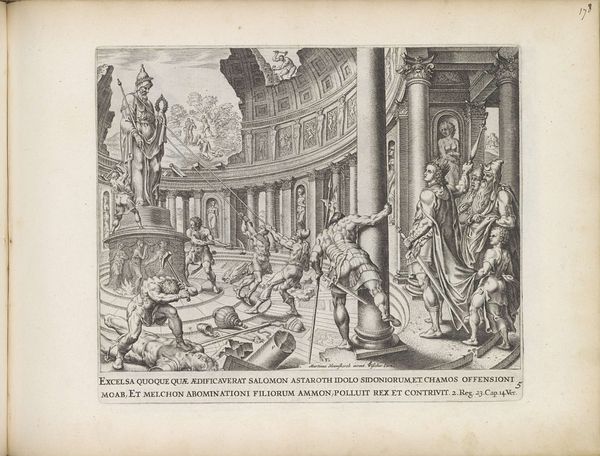
engraving
#
baroque
#
landscape
#
figuration
#
line
#
history-painting
#
engraving
Dimensions: height 170 mm, width 236 mm
Copyright: Rijks Museum: Open Domain
Editor: So, here we have "Aeneas draagt zijn vader het brandende Troje uit," or "Aeneas Carrying His Father out of Burning Troy," an engraving by Bernard Picart from 1731. The city burning in the background gives it a chaotic feel. What do you see when you look at this? Curator: Well, as a materialist, my first instinct is to consider the means of production. It’s an engraving, a process that relies heavily on skilled labor. The act of cutting into the metal plate, the precision required, speaks volumes about the artisanal craftsmanship valued at the time. But also, consider how the *reproducibility* of engraving democratized imagery. How might access to images depicting mythologized history have impacted society? Editor: That’s a fascinating point about access! I hadn’t considered that. What about the content? I mean, the story of Aeneas is loaded with meaning, right? Curator: Exactly. The burning city, the act of carrying a father - what does it tell us about the social and political forces at play? What notions of heroism and duty were circulating, and how did visual media like engravings contribute to their validation? This also ties into materiality; the widespread availability of these prints fostered collective imagination. Can we see this print as an artefact which played an active role in creating "history"? Editor: So, it's not just about the art itself, but about the whole system of creation, distribution, and consumption... How those systems impact cultural ideas? Curator: Precisely! And the Baroque style adds another layer. The drama, the swirling smoke, even the precise lines contribute to this historical moment, which becomes mediated by both its narrative context *and* its production methods. Editor: This has really changed my perspective. I'm now seeing not just the myth, but how this specific *thing*, this engraving, participated in constructing our view of that myth. Curator: That's exactly it. It moves our thinking towards production rather than ideal "creation".
Comments
No comments
Be the first to comment and join the conversation on the ultimate creative platform.
